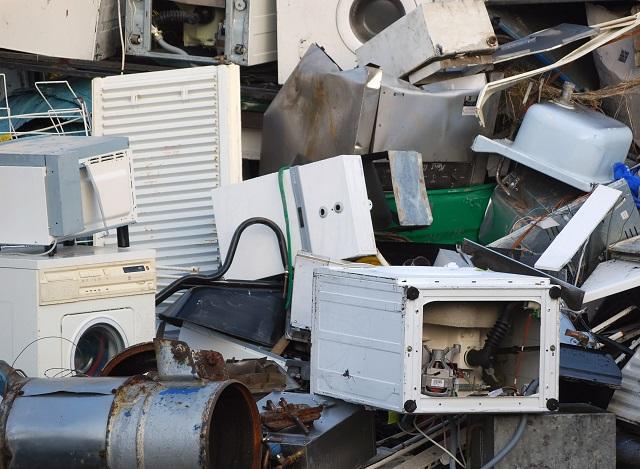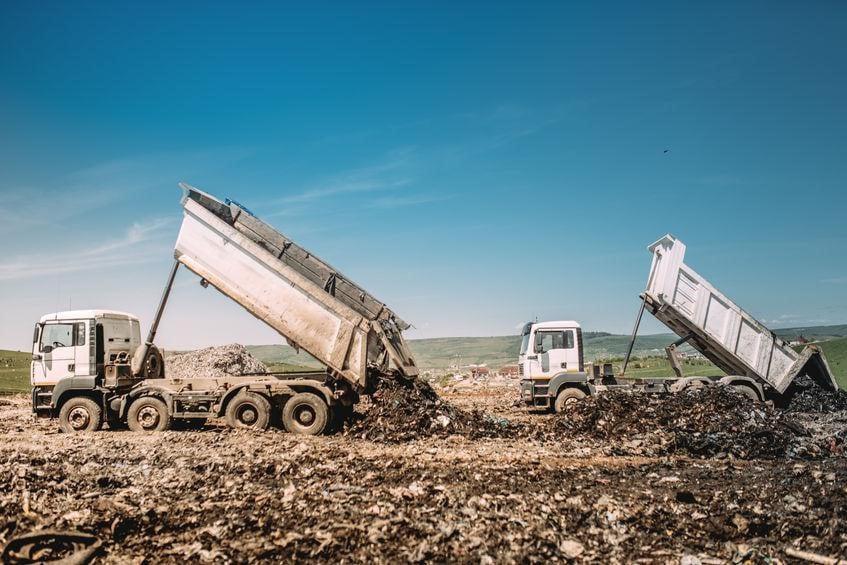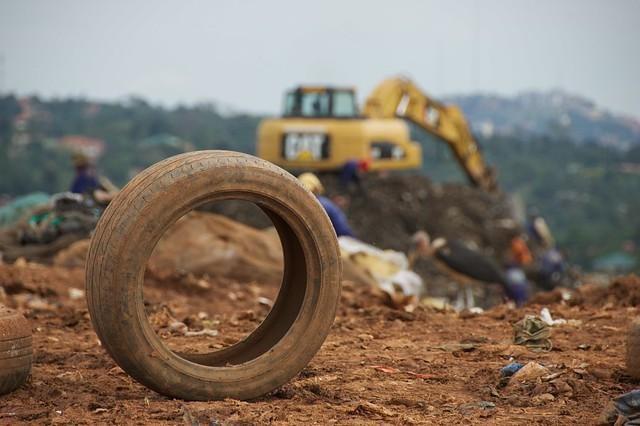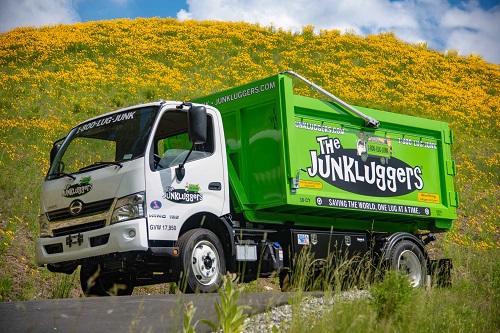The Typical Junk Journey (Updated March 2022)
Updated March 2022 | Chapter 2 of 4

When it comes to our old junk, what they say is true: out of sight, out of mind.
Most people stop caring about what happens to their unwanted junk as soon as it clears the threshold of their home or business. The problem? Where your unwanted items end up has a significant impact on the surrounding communities and environment.
However, where your junk ends up is only one piece of a very complicated puzzle. From production to disposal, the entire lifecycle of a single product impacts the environment in one way or another.
Junk’s destination is crucial because it impacts the surrounding communities and the environment. It’s essential to understand the amount of time and natural resources that go into the creation of products and how their lifespan affects the environment.
In this article, we’re diving deeper into the typical junk journey and will cover:
- The carbon footprint of products manufacturing
- What happens to appliances and other items during the disposal process
- How long items take to decompose
- What we can do to reduce the environmental impact of our junk
The Environmental Impact of Products Manufacturing
If you have an old appliance, you likely know how frustrating it can be to make repairs to get it to work the way it’s supposed to. Nothing puts a stop to that frustration quite like trading in your old appliance for a brand-new one with sleeker finishes and better feature features.
As an added bonus, today’s appliances are much more energy-efficient than their outdated counterparts. But while new appliances can reduce your environmental impact, their backstory often overshadows their eco-friendly features.
That’s because there are a lot of resources wasted behind the scenes during the process that takes new appliances from production to the showroom floor.
Let us illustrate this by looking closer at how one of the most popular home appliances is manufactured and delivered to you: the refrigerator.
Refrigerator Manufacturing Process

Although new refrigerator models have eco-friendly features, the manufacturing process maintains a large carbon footprint.
- A company creates a design for a new refrigerator. Then, they gather materials to make its different parts, such as sheet metal, plastic, tubing, wires, and insulation. These materials require time, natural resources, and human capital to create.
- The company assembles the refrigerator in a factory that affects the environment with air pollution and toxic waste. Manufacturing also requires a huge amount of water, accounting for around 12% of the public water supply in the United States
- Manufacturers used to fill up the unit with freon (also known as a refrigerant) upon completion. Studies show that freon is an environmental concern because it destroys the ozone layer. Although freon isn’t used nowadays, it is still present in older refrigerator models. Companies currently use a wide range of hazardous chemicals to keep refrigerators operating at peak performance.
- Your new refrigerator is loaded onto a cargo ship, which manufacturers use to distribute these types of items to locations around the world. Cargo ships run on bunker fuel, which contributes to poor air quality and water pollution.
- Once the refrigerator arrives at the shipping port, it’s delivered to your local hardware store on a semi-truck, using more diesel fuel and further contributing to air pollution.
- When you buy the new fridge, another diesel-fuel truck delivers it to your home. To make matters worse, it’s wrapped in non-biodegradable plastic wrap.
The delivery of the new appliance brings up a new question: what do you do with your old fridge?
Bulky Items Require Special Handling for Disposal
Unlike boxes or trash bags full of miscellaneous junk, bigger items require unique disposal.
Things like refrigerators, TVs, mattresses, and large furniture don’t go out to the curb — they require special handling. You’re stuck with only a few options:
- Try to sell them
- Load them in the car and drive to the dump
- Call a junk removal company
The first two options are labor-intensive and time-consuming, so a junk removal company is your best bet.
Your typical junk removal companies will take these oversized items and load them into a dumpster or trailer before whisking them away, never to be seen again. Unfortunately, many of these companies make a beeline straight to the landfill because it’s the easiest option. They don’t have to invest extra resources to meet eco-friendly standards, so donating, recycling, and upcycling aren’t even on their radar.
The Journey of Your Junk

Rather than donating, recycling, or repurposing your unwanted items, most junk removal companies dispose of them in a local landfill.
The junk you get rid of goes on a road trip from cherished possession to landfill stuffing.
A typical journey looks like this:
- You comb through your house or apartment to determine what needs to go.
- Then you have to make a decision: can I load the car up with everything, or will I need someone else to take this for me? Most people will call a junk removal company to save their own time and effort.
- Your average local junk removal company swings by and piles your junk into a truck, carelessly tossing your memories aside.
- They drive to the local landfill and drop off your junk without a second thought.
- Your junk sits in a landfill, where it either slowly breaks down over time — or worse, doesn’t break down at all.
Junk doesn’t magically disappear after it reaches the landfill. Here are some of the most common materials people throw away and the amount of time they take to decompose:
- Plastic bottles: 450 years
- Plastic bags: 10-1,000 years
- Glass: Not biodegradable
- Aluminum cans: 200-250 years
- Cigarette butts: 10-12 years
- Batteries: 100 years
- Styrofoam: Not biodegradable
- Tinfoil: Not biodegradable
This short list doesn’t account for many other man-made items that take generations to break down — or never break down at all.

We Need to Redefine the Typical Junk Journey
It may be easier and more cost-effective to use landfills, but they bring us closer to capacity and destroy our environment. We believe the best way to say goodbye to your junk is by donating, recycling, and upcycling it.
The Junkluggers is an Eco-Friendly Junk Removal Company

The Junkluggers utilizes environmentally-friendly junk removal practices by donating, recycling, and repurposing as many of your possessions as possible.
Our junk removal company has always focused on green practices (our CEO self-identifies as something of a “tree hugger”), and we carry these ideals over to junk removal. Donating, recycling, and upcycling go hand-in-hand when it comes to caring for the environment.
We carefully remove junk and sort it in the truck to determine what can be donated to our charity partners. From furniture to mattresses to e-waste, we sort all of the items immediately to be more efficient. It allows us to drop off any items at donation centers while on our route. And if we can donate any of your items, we’ll give you a tax-deductible receipt within 14 business days. Whatever can’t be donated is then recycled or repurposed.
The Junkluggers see options beyond landfills. However, disposing of everything in a landfill has become so common that most people don’t consider anything else. We want to change that by making people more aware of how harmful landfill waste is and the environmentally friendly alternatives to traditional junk removal. That’s why we’ve created this informative seven-chapter blog series.
In the next chapter, we’ll go in-depth on landfills, discussing what landfills are, how to build and maintain them, and the alternatives to using them for our junk. We’ve also included links to the rest of this blog series below.
- Chapter 2: Everything You Need To Know About Landfills
- Chapter 3: 26 Household Items That Don't Disintegrate In Landfills
- Chapter 4: 40 Mind-Blowing Statistics About Waste Management
- Chapter 5: The Sustainable Junk Journey
- Chapter 6: 21 Household Items You Should Be Recycling (& Probably Aren't)
- Chapter 7: 5 Reasons You Should Care Where Junk Goes
To learn more about our sustainable junk removal services or book a free on-site junk hauling estimate in your city, get in touch with your local Junkluggers team.
